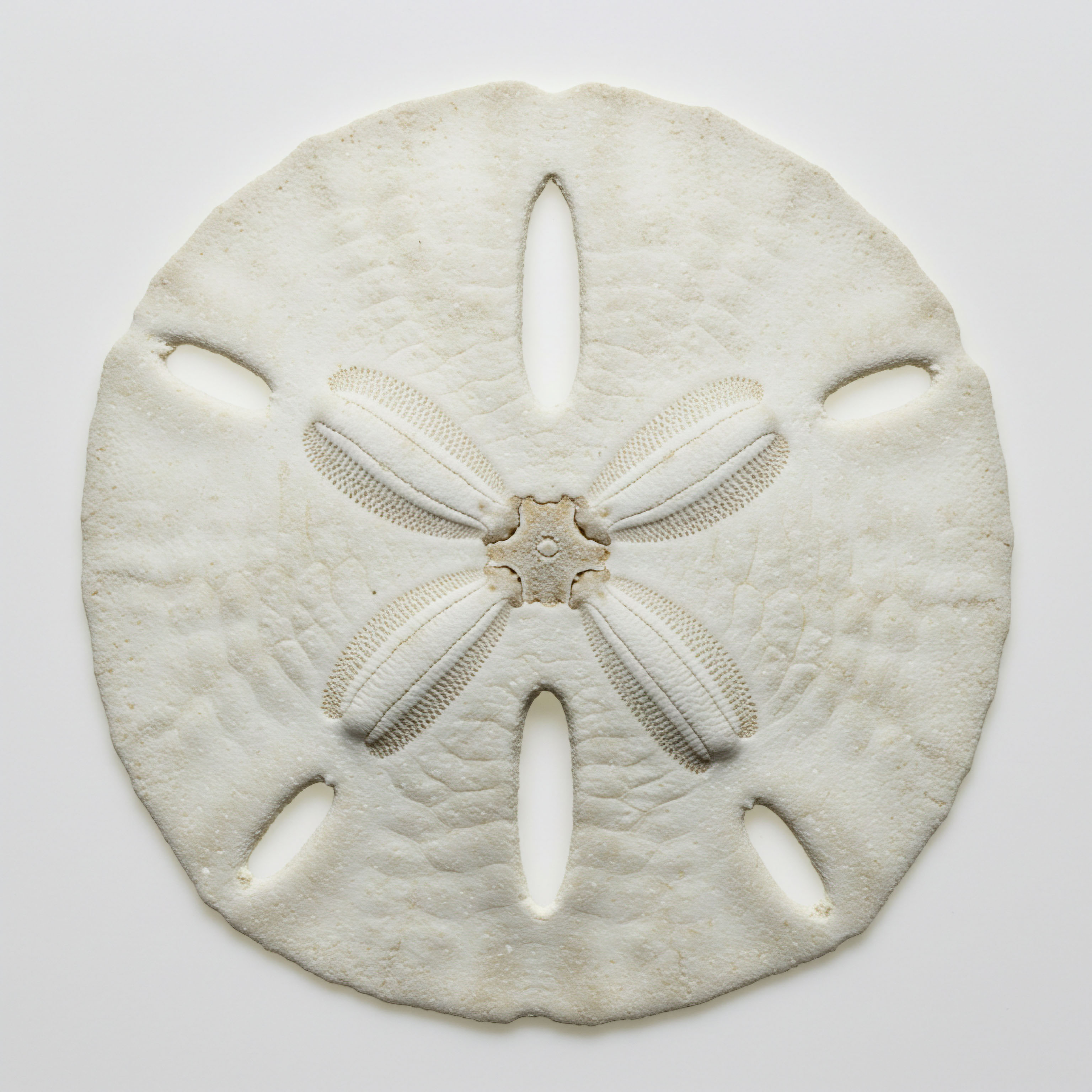

Fundamentals
The experience of waking up feeling unrestored is a profound, physical signal. It speaks a language of cellular fatigue and points toward a disruption in the body’s most foundational restorative process. Your sense of vitality is deeply connected to the quality of your sleep, and when that connection feels frayed, the reason often lies within the intricate communication network of your endocrine system.
Understanding the long-term effects of hormonal optimization on sleep architecture begins with appreciating that sleep is an active, highly organized biological state, governed by the same molecules that regulate your energy, mood, and metabolism throughout the day.
Sleep architecture describes the structural pattern of your sleep, cycling through different stages in a predictable sequence. This nightly rhythm is the physical manifestation of your brain and body performing critical maintenance tasks, from memory consolidation to tissue repair. The integrity of this architecture is directly influenced by your hormonal environment.
When key hormones decline with age or due to other health factors, the blueprint for this restorative process becomes compromised, leading to the fragmented, unsatisfying sleep that many people assume is a permanent part of aging.
The structure of your sleep is a direct reflection of your underlying hormonal health.

The Hormonal Conductors of Sleep
Your body’s endocrine system functions as a precise internal messaging service, using hormones to transmit information between distant cells and organs. During sleep, this communication is especially active, with specific hormones rising and falling to direct the night’s restorative work. A disruption in any one of these hormonal signals can alter the entire sleep cycle.

Testosterone and Its Role in Sleep Structure
In men, testosterone levels follow a distinct diurnal pattern, peaking in the early morning hours, a rise that is tightly coupled to the sleep cycle itself. This hormone is instrumental in maintaining libido, muscle mass, and cognitive function. Its influence extends deeply into sleep architecture.
Healthy testosterone levels are associated with adequate durations of both deep slow-wave sleep (SWS) and Rapid Eye Movement (REM) sleep. As testosterone levels decline, men often experience a reduction in sleep efficiency, meaning more time is spent awake during the night. This creates a challenging feedback loop, as poor sleep quality and duration can further suppress testosterone production.

Estrogen and Progesterone the Female Sleep Regulators
For women, the hormonal narrative of sleep is shaped predominantly by estrogen and progesterone. Estrogen is vital for regulating body temperature. During perimenopause and menopause, fluctuating and declining estrogen levels can lead to vasomotor symptoms like night sweats, which are a primary cause of sleep disruption. Progesterone has a different but complementary role.
It possesses calming, sleep-modulating properties, partly through its interaction with GABA receptors in the brain, the same receptors targeted by many sedative medications. A decline in progesterone can contribute to difficulty falling asleep and staying asleep, independent of night sweats.

The Architecture of Healthy Sleep
To understand how hormonal optimization works, it is helpful to first understand the components it seeks to restore. Healthy sleep is defined by its structure and progression through several distinct stages.
- Stage N1 (Light Sleep) This is the brief transitional phase between wakefulness and sleep, where the body begins to relax.
- Stage N2 (Light Sleep) You spend the largest portion of the night in this stage. It is characterized by further slowing of brain activity, heart rate, and breathing, preparing the body for deeper sleep.
- Stage N3 (Deep Sleep or Slow-Wave Sleep) This is the most physically restorative stage of sleep. During SWS, the body releases a significant pulse of Growth Hormone, which facilitates tissue repair, muscle growth, and immune system maintenance.
- REM Sleep (Rapid Eye Movement) This stage is associated with vivid dreaming and is critical for emotional regulation, memory consolidation, and learning. The brain is highly active during REM sleep, similar to when you are awake.
A full sleep cycle, moving through these stages, typically lasts about 90 minutes and is repeated several times throughout the night. Hormonal imbalances can shorten the time spent in the most valuable stages, N3 and REM, leaving you feeling physically and cognitively depleted even after a full eight hours in bed.


Intermediate
Moving from the foundational knowledge of hormones and sleep, we can examine the specific clinical protocols designed to address these biological disruptions. Hormonal optimization therapies are intended to re-establish physiological balance, directly impacting sleep architecture as a primary outcome.
The goal of these interventions is a recalibration of the body’s internal signaling to restore the integrity of the sleep cycle. This is achieved by addressing the specific hormonal deficiencies that lead to fragmented sleep, reduced deep sleep, and difficulty with sleep initiation.

How Do Hormonal Imbalances Manifest as Sleep Problems?
The subjective feeling of poor sleep can be traced back to objective, measurable changes in sleep architecture caused by specific hormonal deficits. Recognizing these patterns is the first step in understanding the rationale behind targeted treatment protocols.
- Difficulty Falling Asleep This can be linked to low progesterone in women, as its calming effects are diminished. In both men and women, elevated cortisol levels, a stress hormone that has an inverse relationship with sleep-promoting hormones, can also prevent sleep onset.
- Frequent Nighttime Awakenings This is a hallmark symptom of declining hormones. In women, estrogen-related hot flashes can cause abrupt arousals from deep sleep. In men, low testosterone is associated with lower sleep efficiency and more time spent awake after initially falling asleep.
- Waking Up Too Early An inability to maintain sleep in the final hours of the night can be related to dysregulated cortisol rhythms, where cortisol begins to rise prematurely.
- Feeling Unrefreshed Upon Waking This is a direct consequence of insufficient time spent in slow-wave sleep (SWS) and REM sleep. Even if you are in bed for a sufficient number of hours, a lack of deep, restorative sleep will prevent you from feeling rested.

Clinical Protocols for Sleep Architecture Restoration
Personalized wellness protocols use specific therapeutic agents to correct the underlying hormonal imbalances that fragment sleep. The selection of the protocol is based on a comprehensive evaluation of an individual’s symptoms and laboratory markers.

Testosterone Replacement Therapy in Men
For men with clinically low testosterone, TRT is a foundational intervention. The standard protocol often involves weekly intramuscular injections of Testosterone Cypionate. This approach is designed to restore serum testosterone to a healthy physiological range.
To maintain testicular function and mitigate potential side effects, TRT is often paired with Gonadorelin, which stimulates the body’s own production of luteinizing hormone (LH), and an aromatase inhibitor like Anastrozole, which controls the conversion of testosterone to estrogen. By restoring testosterone levels, this protocol can improve sleep efficiency and increase the time spent in restorative deep sleep.
One important clinical consideration is that testosterone therapy can sometimes worsen sleep-disordered breathing, or obstructive sleep apnea (OSA), in susceptible individuals. Therefore, a thorough assessment for OSA is a necessary part of a comprehensive treatment plan.

Hormone Therapy for Women
In women, particularly during the perimenopausal and postmenopausal transitions, hormone therapy is aimed at alleviating the symptoms that disrupt sleep. Protocols may include low-dose Testosterone Cypionate administered subcutaneously, which can help with libido, energy, and overall well-being. The cornerstone of sleep improvement for many women, however, is progesterone.
Oral micronized progesterone, taken before bed, has a well-documented ability to improve sleep quality by promoting sleep onset and increasing SWS. Estrogen replacement, delivered via patch or cream, directly addresses vasomotor symptoms like night sweats, preventing them from fragmenting sleep throughout the night.
Restoring progesterone is often a key intervention for improving sleep initiation and depth in women experiencing hormonal changes.

Growth Hormone Peptide Therapy
For adults seeking to improve recovery, body composition, and sleep quality, Growth Hormone (GH) peptide therapy is a targeted intervention. Peptides like Sermorelin and the combination of Ipamorelin/CJC-1295 are GHRH analogs, meaning they stimulate the pituitary gland to produce and release its own growth hormone in a natural, pulsatile manner.
This is distinct from direct HGH injections. The primary effect of these peptides on sleep architecture is a significant enhancement of slow-wave sleep. Since the body’s main pulse of GH is released during SWS, this therapy creates a positive feedback loop ∞ the peptides promote deep sleep, and the deep sleep allows for a more robust release of natural growth hormone, further enhancing the restorative quality of that sleep.
| Protocol | Primary Hormonal Target | Effect on Slow-Wave Sleep (SWS) | Effect on REM Sleep | Effect on Sleep Latency & Awakenings |
|---|---|---|---|---|
| Male TRT (Testosterone Cypionate) | Testosterone | May increase SWS duration. | Associated with normalization of REM sleep. | Improves sleep efficiency, reduces nocturnal awakenings. |
| Female HRT (Estrogen/Progesterone) | Estrogen & Progesterone | Progesterone significantly increases SWS. | Variable effects, overall improvement in sleep continuity. | Progesterone reduces sleep latency; Estrogen reduces awakenings from hot flashes. |
| GH Peptide Therapy (Sermorelin, Ipamorelin) | Growth Hormone (via GHRH) | Significantly increases the duration and intensity of SWS. | Less direct impact compared to SWS. | Can improve sleep onset by regulating circadian rhythms. |


Academic
An academic exploration of hormonal optimization’s long-term effects on sleep architecture requires a systems-biology perspective. This viewpoint considers the intricate, bidirectional relationships between the major neuroendocrine axes ∞ the Hypothalamic-Pituitary-Gonadal (HPG), the Hypothalamic-Pituitary-Adrenal (HPA), and the Growth Hormone (GH) axis.
Hormonal optimization protocols are interventions that recalibrate the function of these interconnected systems. The resulting changes in sleep architecture are a direct readout of this systemic re-regulation. The long-term objective is to shift the body from a state of catabolic, stress-dominant physiology, often characterized by HPA axis hyperactivity and poor sleep, to an anabolic, restorative state supported by robust HPG and GH axis function.

The HPG Axis and Sleep a Bidirectional Relationship
The HPG axis governs the production of gonadal hormones like testosterone and estrogen. Its function is profoundly influenced by sleep. The primary secretion of Luteinizing Hormone (LH), which drives testosterone production in men, occurs in a pulsatile fashion during sleep. Sleep deprivation or fragmentation severely blunts this process, leading to lower morning testosterone levels.
Low testosterone, in turn, is associated with a degradation of sleep architecture, specifically a reduction in sleep efficiency and a decrease in both SWS and REM sleep. This establishes a self-perpetuating cycle of hormonal decline and sleep deterioration. Long-term TRT in men aims to break this cycle.
By providing an exogenous source of testosterone, it restores serum levels, which can lead to an improvement in sleep continuity and depth. The use of Gonadorelin within these protocols is a sophisticated clinical strategy to prevent the negative feedback of exogenous testosterone from completely shutting down the HPG axis, thus preserving some endogenous pulsatile function.

How Does Hormone Therapy Affect Sleep in China’s Regulatory Landscape?
The regulatory framework in China for hormonal therapies, including TRT and peptide treatments, presents a distinct set of considerations for both clinicians and patients. The approval and availability of specific formulations, such as Testosterone Cypionate or certain peptides like Ipamorelin, may differ from Western markets.
This necessitates a deep understanding of the regulations set forth by the National Medical Products Administration (NMPA). Clinical practice must align with approved indications, and the long-term monitoring of patients on these protocols is subject to specific national guidelines. The cultural perception of aging and hormonal decline also influences patient willingness to seek treatment, requiring a clinical approach that is both medically sound and culturally sensitive.

Interplay of the HPA Axis and Hormonal Balance
The HPA axis is the body’s primary stress response system, culminating in the release of cortisol. In a healthy state, cortisol follows a diurnal rhythm, peaking in the morning to promote wakefulness and reaching its lowest point during the first few hours of sleep.
Chronic stress, aging, and hormonal decline can lead to HPA axis dysfunction, often characterized by elevated evening cortisol levels. This biochemical state is antithetical to sleep initiation and maintenance. Cortisol directly opposes the function of melatonin and blunts the release of GH. Hormonal optimization can positively influence HPA axis function.
For instance, restoring physiological testosterone levels has been shown to modulate cortisol activity. Progesterone has a direct dampening effect on the HPA axis, which contributes to its sleep-promoting properties. Long-term, a well-functioning endocrine system, supported by hormonal optimization, fosters HPA axis resilience, leading to a more robust and stable sleep-wake cycle.
Systemic hormonal optimization works by recalibrating the interplay between the body’s stress and growth axes.
| Hormone/Peptide | Primary Gland/Source | Key Influence on Sleep Architecture | Mechanism of Action |
|---|---|---|---|
| Testosterone | Leydig Cells (Testes) | Supports SWS and REM sleep; improves sleep efficiency. | Sleep-dependent pulsatile release; modulates neurotransmitter systems. |
| Progesterone | Corpus Luteum (Ovaries) | Promotes sleep onset; increases SWS. | Metabolizes to allopregnanolone, a potent positive allosteric modulator of GABA-A receptors. |
| Growth Hormone (GH) | Anterior Pituitary | Promotes and is released during SWS. | GH release is stimulated by GHRH and inhibited by somatostatin; creates a restorative feedback loop with deep sleep. |
| Cortisol | Adrenal Cortex | High levels are disruptive to sleep initiation and maintenance; suppresses SWS. | Promotes arousal and wakefulness; its nadir is permissive for sleep onset. |
| Sermorelin/Ipamorelin | Exogenous Peptide | Potently increases the duration and quality of SWS. | Mimics endogenous GHRH (Sermorelin) or Ghrelin (Ipamorelin) to stimulate a natural pulse of GH from the pituitary. |

The GH Axis the Master Restorative System
The GH axis is perhaps the most directly linked to the restorative functions of sleep. The vast majority of daily GH secretion occurs during the first major SWS episode of the night. This GH pulse is critical for protein synthesis, lipid metabolism, and cellular repair.
Age-related decline in GH secretion is paralleled by a decline in SWS duration. GH peptide therapies like Sermorelin or CJC-1295/Ipamorelin are designed to directly counter this decline. By stimulating the pituitary, they enhance the amplitude of the natural, sleep-related GH pulse.
This not only promotes the physical recovery associated with GH but also deepens and solidifies SWS itself. The long-term effect of this intervention is the re-establishment of the powerful, synergistic relationship between deep sleep and anabolic repair, a cornerstone of healthy aging.
- Ghrelin Mimetics Peptides like Ipamorelin act on the ghrelin receptor to stimulate GH release. This pathway is distinct from the GHRH pathway, offering another therapeutic target.
- Pulsatility A key advantage of peptide therapy over direct HGH administration is the preservation of pulsatility. The body’s tissues are designed to respond to intermittent hormonal signals, and these therapies honor that physiological principle.
- Somatostatin Inhibition Part of the age-related decline in GH is due to an increase in somatostatin, the hormone that inhibits GH release. Some advanced peptide strategies also focus on modulating somatostatin to increase the net GH output.

References
- Caskey, F. J. Hein, M. & Cooper, B. G. (2008). The Association of Testosterone Levels with Overall Sleep Quality, Sleep Architecture, and Sleep-Disordered Breathing. Journal of Clinical Sleep Medicine, 4(1), 25 ∞ 30.
- Hachul, H. et al. (2008). Effects of hormone therapy with estrogen and/or progesterone on sleep pattern in postmenopausal women. International Journal of Gynecology & Obstetrics, 103(3), 237-242.
- Loti Labs. (2025). Sermorelin’s Effect on Sleep ∞ Research by Loti Labs. Retrieved from Loti Labs publications.
- Mayo Clinic. (2017). Study finds hormone therapy improves sleep quality for recently menopausal women. Mayo Clinic News Network.
- Wittert, G. (2014). The relationship between sleep disorders and testosterone in men. Asian Journal of Andrology, 16(2), 262 ∞ 265.

Reflection

What Is the Ultimate Goal of Hormonal Recalibration for Sleep?
The information presented here provides a map of the biological systems that govern your nightly restoration. It connects the symptoms you may feel ∞ the fatigue, the fragmented nights, the sense of being unrestored ∞ to the precise, measurable functions of your endocrine system. This knowledge is the starting point.
The data, the protocols, and the science all point toward a single, powerful conclusion ∞ your body possesses an innate capacity for deep, restorative sleep. The path forward involves understanding your unique biochemistry and using targeted interventions to clear the disruptions that stand in the way. The ultimate goal is to restore the integrity of your body’s own internal communication, allowing you to reclaim the profound vitality that is generated during those quiet, essential hours of the night.



